Discover how a bimodal integration strategy can address the major data management challenges facing your organization today.
Get the Report →Create Google Cloud Storage Dashboards in Bold BI
Use CData Connect Server to create a virtual SQL Server Database for Google Cloud Storage data to build custom dashboards in Bold BI.
Bold BI allows you to create, share, and collaborate on interactive BI dashboards. When paired with CData Connect Server, you get instant access to Google Cloud Storage data for visualizations, dashboards, and more. This article shows how to create a virtual database for Google Cloud Storage and build reports from Google Cloud Storage data in Bold BI.
CData Connect Server provides a pure SQL Server interface for Google Cloud Storage, allowing you to easily build reports from live Google Cloud Storage data in Bold BI — without replicating the data to a natively supported database. As you build visualizations, Bold BI generates SQL queries to gather data. Using optimized data processing out of the box, CData Connect Server pushes all supported SQL operations (filters, JOINs, etc) directly to Google Cloud Storage, leveraging server-side processing to quickly return the requested Google Cloud Storage data.
Create a Virtual SQL Server Database for Google Cloud Storage Data
CData Connect Server uses a straightforward, point-and-click interface to connect to data sources and generate APIs.
- Login to Connect Server and click Connections.
![Adding a connection]()
- Select "Google Cloud Storage" from Available Data Sources.
-
Enter the necessary authentication properties to connect to Google Cloud Storage.
Authenticate with a User Account
You can connect without setting any connection properties for your user credentials. After setting InitiateOAuth to GETANDREFRESH, you are ready to connect.
When you connect, the Google Cloud Storage OAuth endpoint opens in your default browser. Log in and grant permissions, then the OAuth process completes
Authenticate with a Service Account
Service accounts have silent authentication, without user authentication in the browser. You can also use a service account to delegate enterprise-wide access scopes.
You need to create an OAuth application in this flow. See the Help documentation for more information. After setting the following connection properties, you are ready to connect:
- InitiateOAuth: Set this to GETANDREFRESH.
- OAuthJWTCertType: Set this to "PFXFILE".
- OAuthJWTCert: Set this to the path to the .p12 file you generated.
- OAuthJWTCertPassword: Set this to the password of the .p12 file.
- OAuthJWTCertSubject: Set this to "*" to pick the first certificate in the certificate store.
- OAuthJWTIssuer: In the service accounts section, click Manage Service Accounts and set this field to the email address displayed in the service account Id field.
- OAuthJWTSubject: Set this to your enterprise Id if your subject type is set to "enterprise" or your app user Id if your subject type is set to "user".
- ProjectId: Set this to the Id of the project you want to connect to.
The OAuth flow for a service account then completes.
![Configuring a connection (SQL Server is shown).]()
- Click Save Changes
- Click Privileges -> Add and add the new user (or an existing user) with the appropriate permissions.
With the virtual database created, you are ready to connect to Google Cloud Storage data from Bold BI.
Visualize Live Google Cloud Storage Data in Bold BI
The steps below outline connecting to CData Connect Server from Bold BI to create a new Google Cloud Storage data source and build a simple visualization from the data.
- Log into your Bold BI instance, click the data sources tab, create a new data source, and choose the SQL Server connector.
- Choose the basic configuration and set the connection properties:
- Name: Name your connection
- Server name: Your Connect Server instance (CONNECT_SERVER_URL)
- Port: 1433
- Username: Your Connect Server username
- Password: Your Connect Server password
- Mode: Choose Live to query Google Cloud Storage on-demand or choose Extract to load the data into Bold BI
- Database: Choose the database you created from the drop-down menu (googlecloudstoragedb)
- Click Connect
- Select the table to visualize and drag it onto the workspace.
- Select a visualization style and add it to the report.
- Click the gear icon for the visualization to configure the visualization properties and assign columns to the visualization.
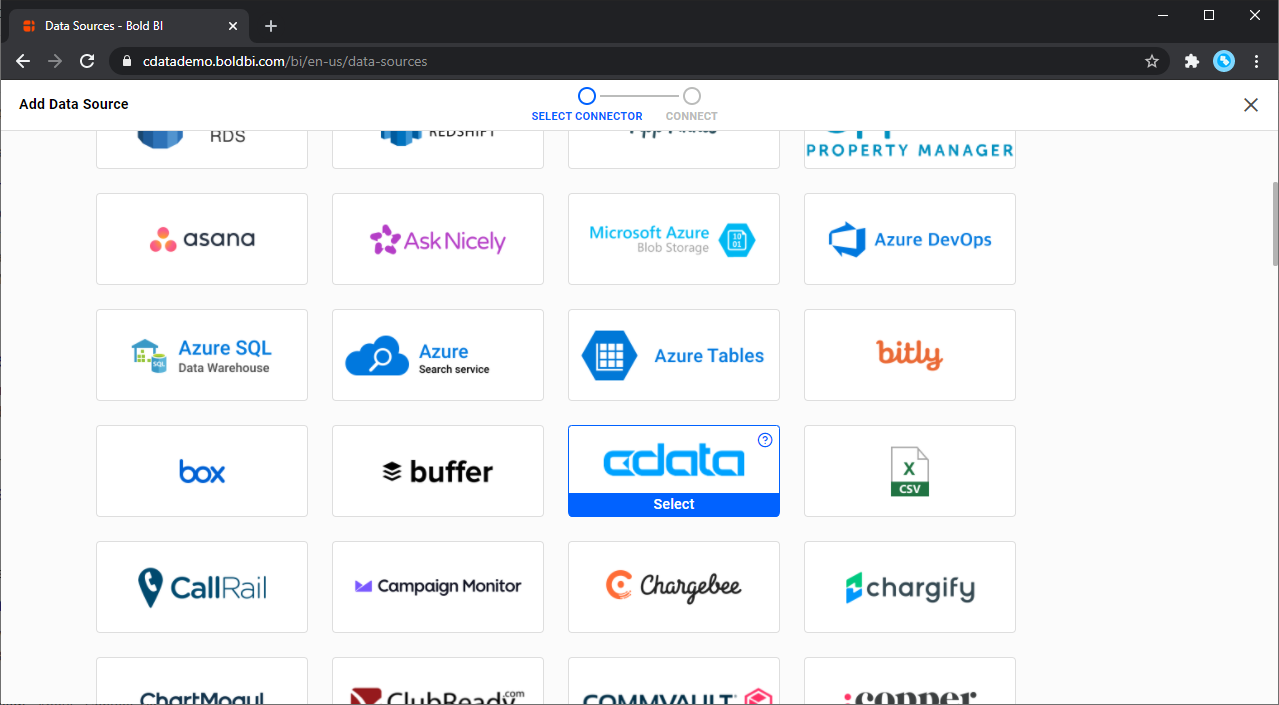
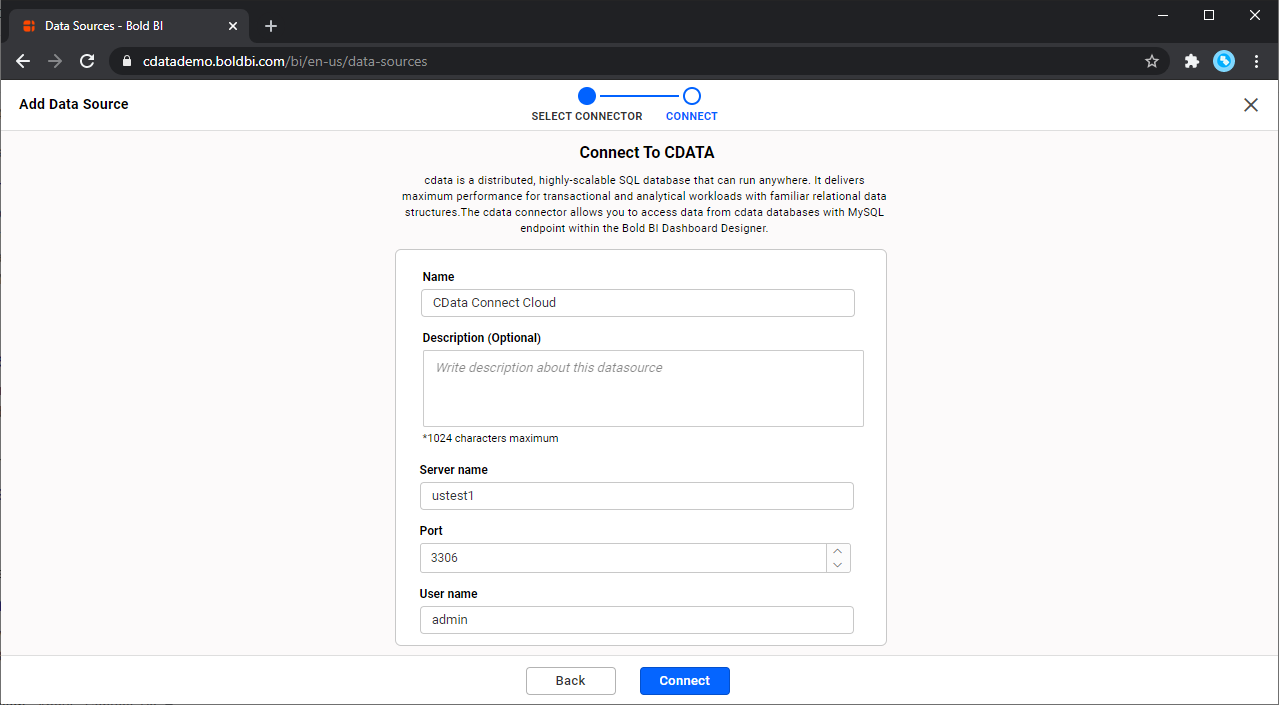
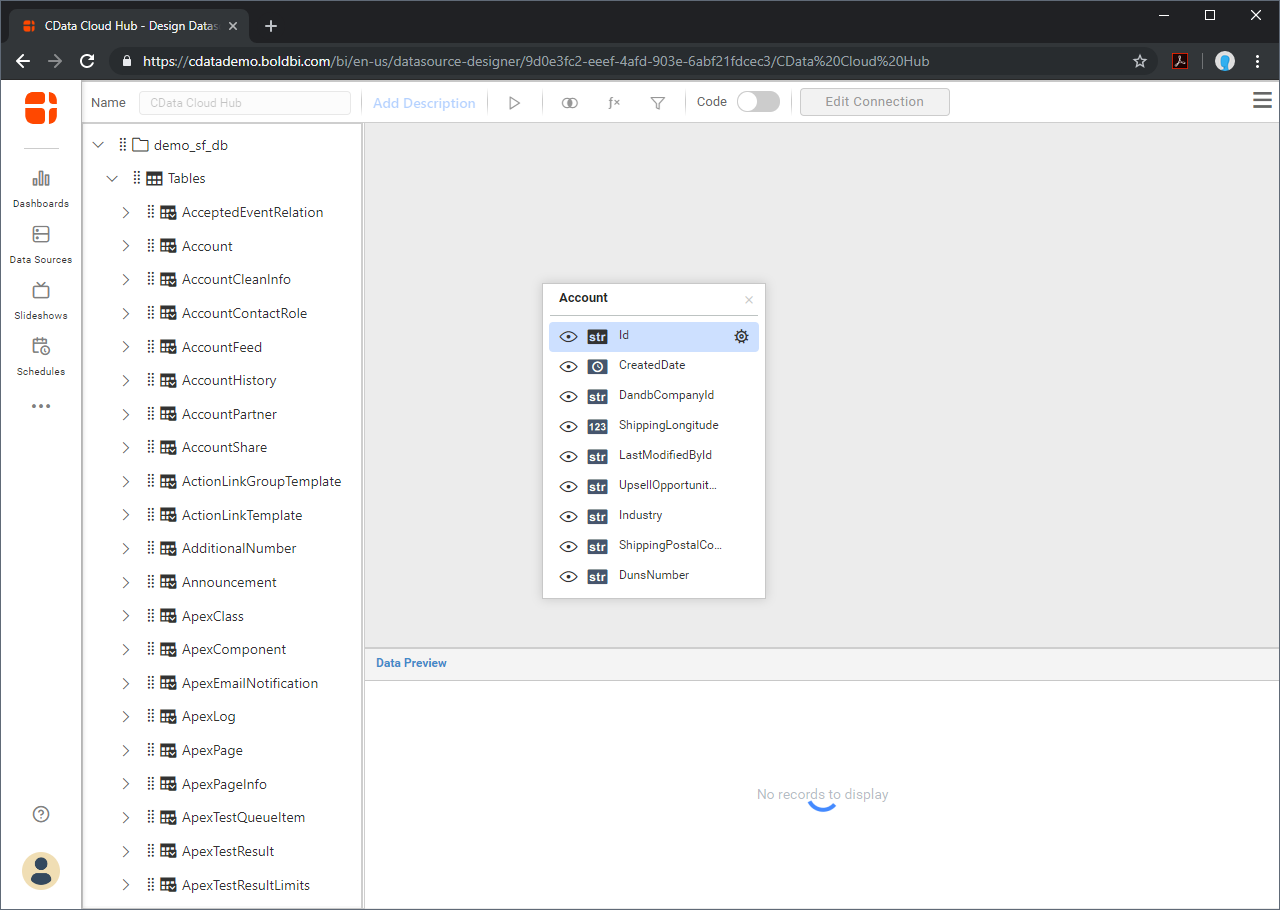
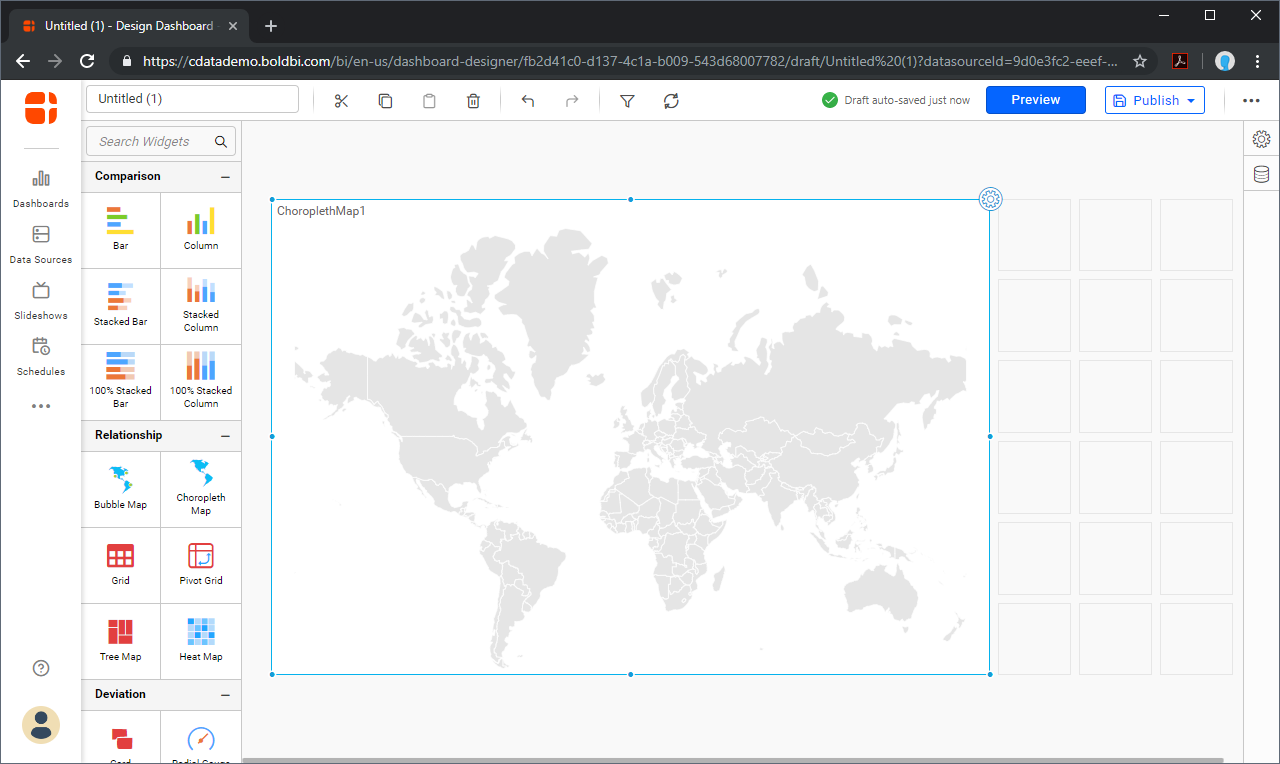
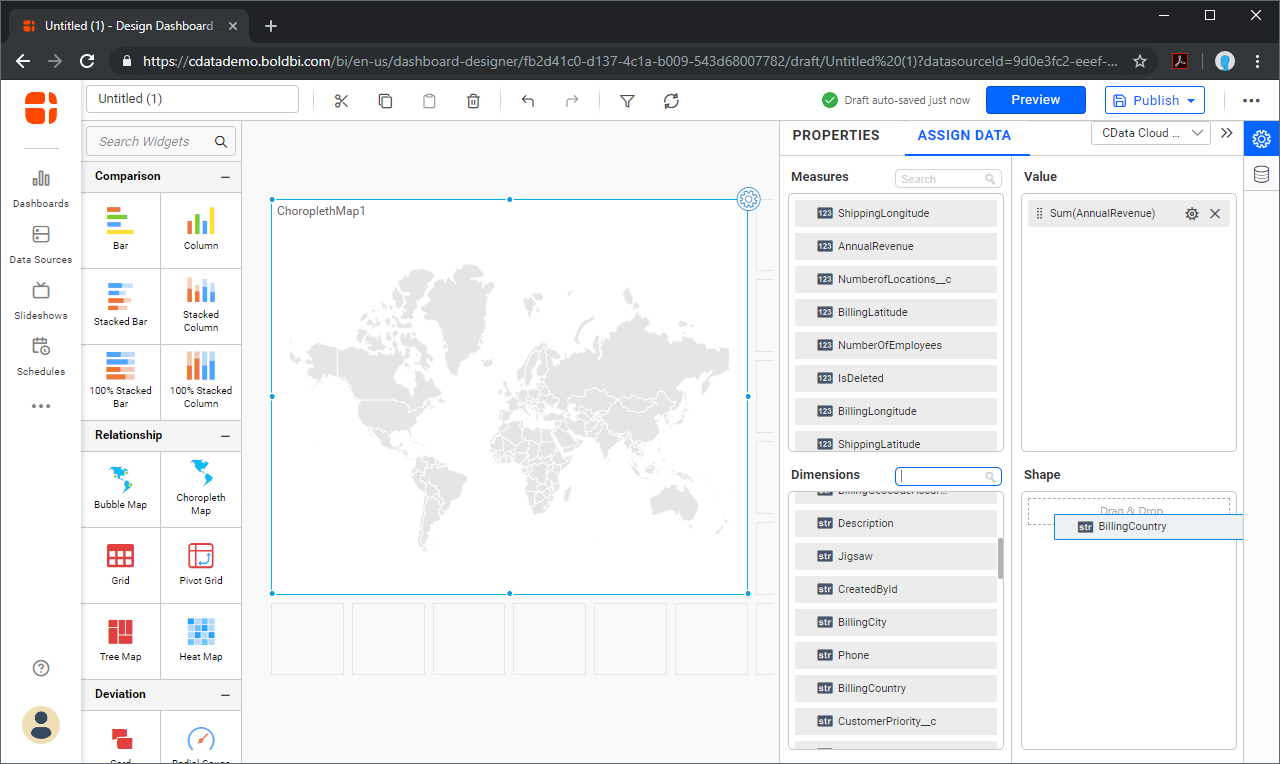
SQL Access to Google Cloud Storage Data from Applications
Now you have a direct connection to live Google Cloud Storage data from your Bold BI workbook. You can create more data sources and new visualizations, build reports, and more — all without replicating Google Cloud Storage data.
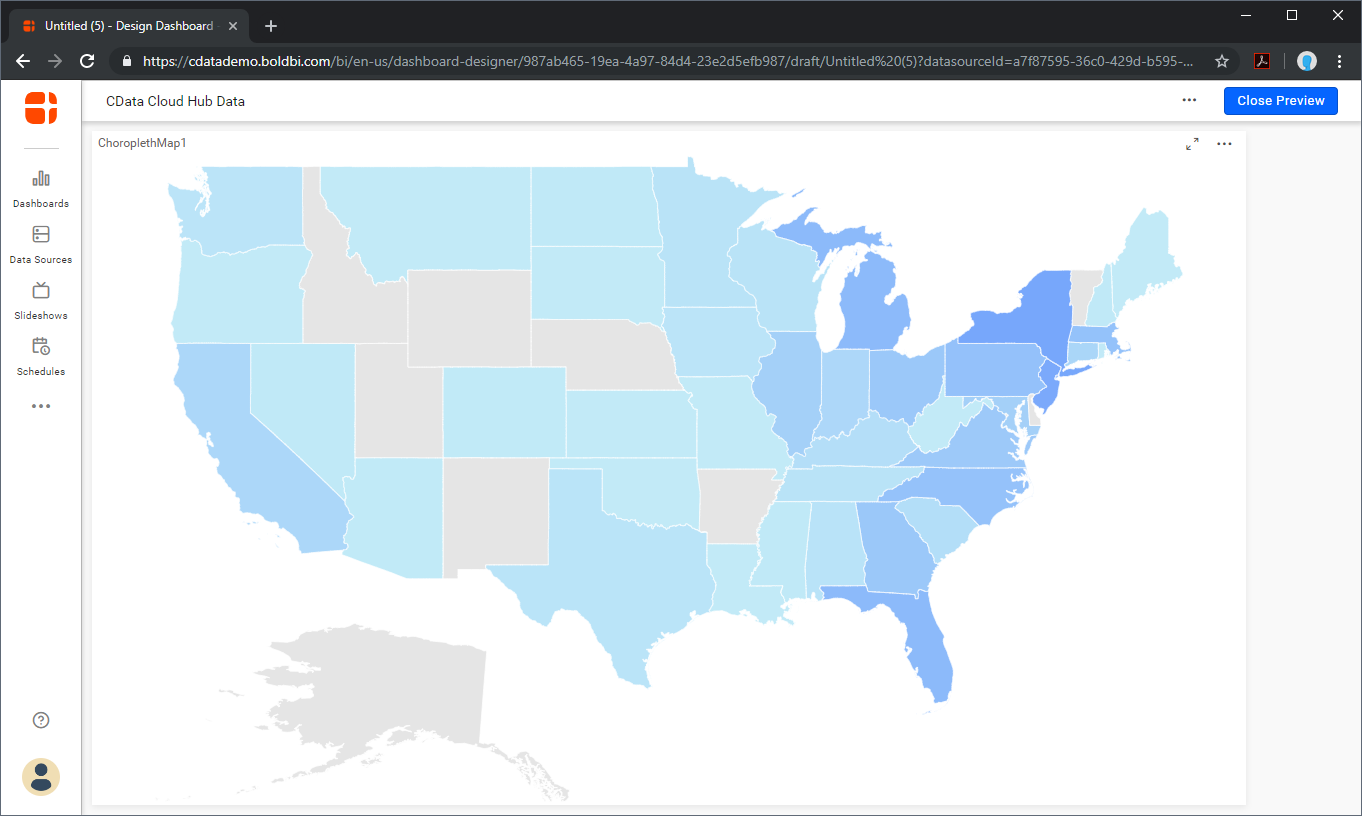
To get SQL data access to 200+ SaaS, Big Data, and NoSQL sources directly from your applications, see the CData Connect page.








